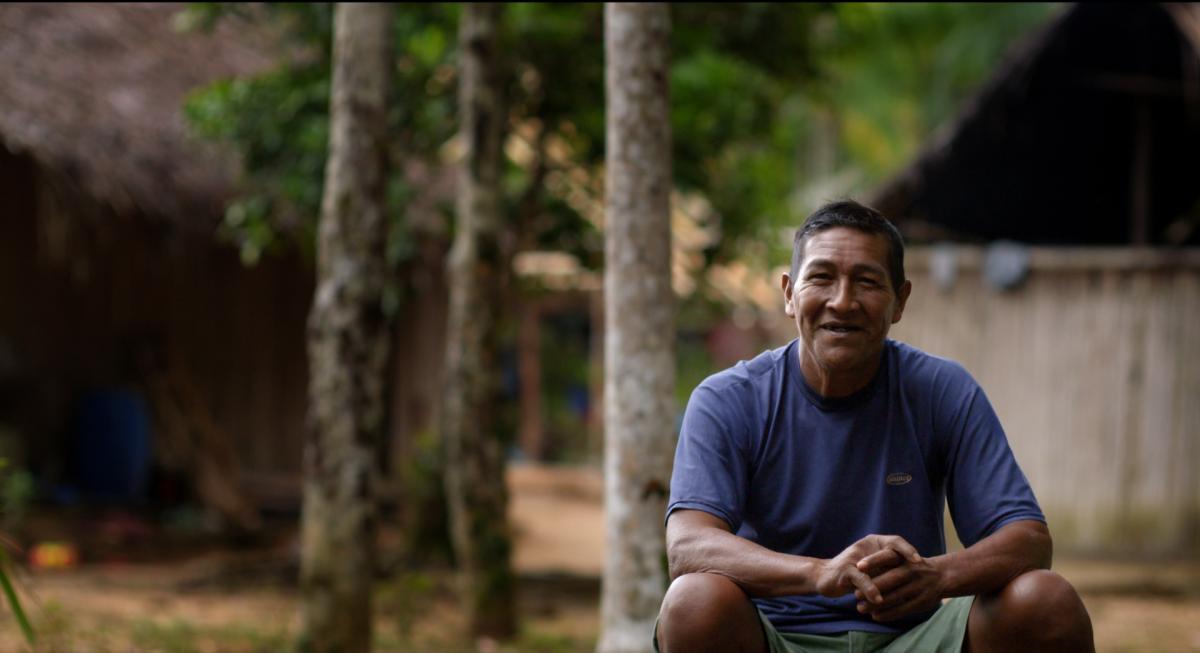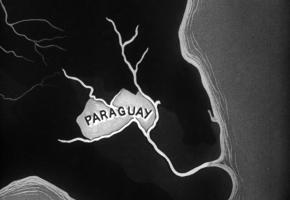With his previous work 'Alma Clandestina' (2018), about Maria Auxiliadora Lara Barcelos a political activist, who fought against the Brazilian dictatorship in the 1960s, Portuguese director Jose Barahona established his clear fascination with Brazilian history. In his third documentary, 'Nheengatu', Barahona delves even further into the history of Brazil, where he travelled with his crew on boats along the Rio Negro in northern Amazonia, stopping at villages to talk to the people living there, in search of a lost language.
Nheengatu is a mixed language, based on Portuguese and the indigenous Tupi language, which was developed by the colonizers as they moved inland after arriving in Brazil in the 16th Century. Its use peaked in the 18th Century and then declined as the colonizers tried to re-assert Portuguese as a means of control, and now is used mostly in the area of the Rio Negro.
One of the film’s main characters, Edson, used to be a teacher of the language, and was the person who introduced the film crew to people at each stopping point. The journey evokes some scepticism by the local inhabitants who are used to being exploited by the white man, although so far, mining has not encroached on this area.
LatinoLife: You said that Nheengatu is both a language of conquest and of resistance...
José Barahona: When the Portuguese first arrived in Porto Seguro in Bahia, the language they found was Tupi, which they learned as best they could, mixing it with Portuguese words for things like salt and coffee, which the indigenous people did not have. Then, as they began to move into the interior over the next 2 centuries they used this language to communicate with other ethnic groups, mixing in more words from these languages, until when they reached the Amazon it became what we call today Nheengatu. From then on, the Portuguese made the Indians learn the language, and it became very widespread across Brazil. The Marques de Pombal banned it, because he felt that the Portuguese were losing control, but it was very strong in the north of Amazonia, where I shot this film and it survived.
And now it’s a language of resistance, because some ethnic groups, like the Barés, who have lost their Baré language now speak Nheengatu, and for them it is a way of affirming their identity.
LL: Now Brazil has a right-wing government, is Bolsonaro trying to repress this language?
JB: Bolsonaro has probably never heard of Nheengatu, but they are trying to repress all aspects of indigenous communities and their culture, because there are a lot of natural resources there. They want the Indians to assimilate to the white culture, to live in cities and give up their rights to the land. But Nheengatu and other languages like Tucano, and Banniwa, are a means of affirming a different identity, because in other respects the indigenous people live like us, dress like us, use cellphones and so on.
LL: Why did you decide to make this film about Nheengatu instead of climate change and deforestation?
JB: Everything is connected, and there are many interesting things about the Indian culture, so Nheengatu was a pretext to get to know these people. It’s not that I’m not interested in climate change and these political questions; but making a film about this language gives a different way of looking at Amazonia.

LL: In the film, Dona Siloca said the white people are more civilized and local people want to be more like them, and that seemed to be a view that many people in the film had, how did that make you feel?
JB: She was talking about the desire to catch up with white people. She has a lot of relatives and friends that are highly educated – ‘civilised’, she said. And when I asked her ‘what is civilised?’, she said it’s not living naked in the forest. She is nearly 100 years old, and she learned from the priests, that the white people have progressed, and they came with their technology, including military power. And they gave the Indigenous people clothes, and religion, and told them they should be more like them. And we still have the power through technology. And she still thinks in the way that the priests taught her.
LL: It must have been obvious that you were not there to sell them anything or to steal their resources, but did they trust you at the beginning? Like – “what’s this white guy doing here, trying to be nice to us?”
JB: They saw me as someone coming to buy, not to sell, and they are tired of being exploited by the white man. They know what a film is, even though it was a smaller production than they thought, and so everything was negotiated, they were all paid. And you can see this happening in the film behind the camera as it were. So, the relationship in the film is not just a case of us arriving there and they say ‘Hi, welcome’.
LL: What was the attitude of white Brazilians to you arriving to film?
JB: There aren’t many white people there, only some young anthropologists and NGOs, and they work very closely with indigenous populations. There are no tourists.

LL: Edson also teaches the language and trains teachers, what was his role in making the film?
JB: He used to teach, now he’s the head of the teaching dept of the FOIRN – Federation of Indians of the Upper Rio Negro (Federaçao dos Indios do Rio Negro). They are the people who gave us the most help and in negotiating with the people who appeared in the film. His parents were teachers too and he knows everyone in the area, when we travelled by boat, he introduced us to people at each stop.
LL: Does Nheengatu have a dictionary, is it considered to be a Creole or a Pidgin language?
JB: Sao Gabriel de Cachoeira is the only municipality in Brazil which has 4 official languages: Portuguese, Nheengatu, Banniwa and Toucano, and they are working on a dictionary and a grammar, so that it becomes established. It is considered a language, not a dialect.
LL: Describe the challenges in making this film…
The conditions were difficult in making Nheengatu, because there are no restaurants or tourism, and because of the heat, plus malaria and dysentery, I got sick while we were there.
The film has its own cinematic language, a mixed language like Nheengatu. You have camera A which is the documentary point of view, and there is camera B, which is pointing at the film crew, so you see me, the boom man the camera operator a lot. And then there were the smartphones. All the characters were given one so that they could make images that could be incorporated into the film, and I too shot a lot of images like this. I think it gets us closer to contemporary reality, because people are doing this all the time, you see it on the internet all the time. So, it’s like a mixed cinematic language with various points of view – you see the film at the same time as you see the making of the film.
Making a film in the Amazon involves a lot of difficulties and there is a tradition. There is Apocalypse Now, shot on a river journey, and Hertzog’s films like Aguirre the Wrath of God and Fitzcarraldo, both shot on rivers in the Amazon. There is Burden of Dreams, by Les Blank about the making of Fitzcarraldo, which influenced me a lot, and I thought it was interesting to join the two perspectives in one film. I wanted to do this when I made The Lost Manuscript, but the images weren’t good enough, so I lost it then, but now it’s come back.
LL: A bit like deconstructing the power of the film - maker?
Yes, maybe because you are showing all the tricks and things that normally people don’t see. The other day, a close friend of mine told me, ‘you moved the bucket of mandioca closer to the camera, so you were arranging reality, not recording it’. We do that all the time in documentaries, we fix reality to put it in the frame, but usually the audience doesn’t see the director or the assistant doing this. So, arranging reality, you show more.

LL: What’s your next project?
JB: My next film is fiction, about a slave ship that is travelling from Angola to Brazil which goes down near an island in the Atlantic, and a few white people and many slaves survive, the relations between Portugal, Brazil and Angola.
Watch the trailer below...



















